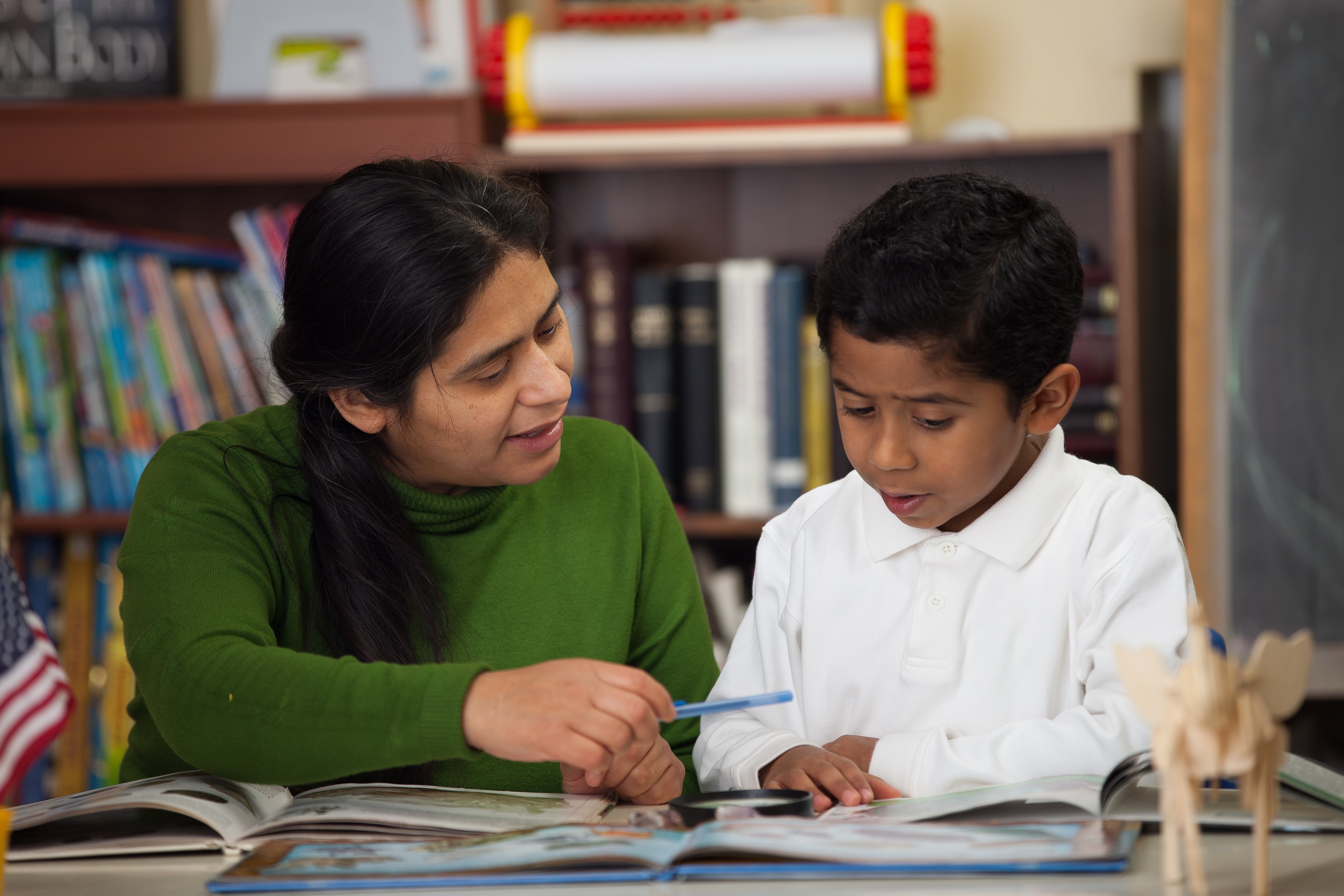Poverty is widely recognized as one of the most significant barriers to educational success. The reasons for poverty’s effects on education are multi-faceted, but research has consistently shown that these effects are generally lasting and cut across racial and ethnic groups.
If left unchecked, poverty can undermine access to education, but there are ways that teachers can address and reduce poverty’s effects on children’s learning.
This blog will discuss the prevalence of poverty as well as its effects on academic and behavior outcomes in schools. Finally, we'll cover known methods to achieve educational equity.
Prevalence of Childhood Poverty in the U.S.
Poverty is defined as having less income than required to meet an income “threshold” that accounts for the basic needs of all members of a household. As of 2017, the total U.S. poverty rate was 12.3% (U.S. Census Bureau, 2018). The rate for children was higher, at 18%. Although whites make up the majority of impoverished Americans, African-Americans experience poverty at a higher rate (21%) than any other race. A child’s family and living situation influence the likelihood of poverty.
Children of single mothers are far more likely to live in poverty. Parental education also influences childhood poverty. Children whose parents completed high school, as well as those who completed college, are much less likely to live in poverty (U.S. Census Bureau, 2017).
Adverse Childhood Experiences
Although U.S. poverty rates have not changed much in recent decades, there remain a significant number of children who come to school every day whose educational future is at risk because of poverty. And, the U.S. poverty rate is much higher than other industrialized nations (Organization for Economic Cooperation and Development, 2018).
Many of the children born into poverty will remain there. A number of factors contribute to how poverty undermines school outcomes. These include:
- Maternal depression
- Poor nutrition
- Poor health
- Parental relationship instability
- Housing instability
- Food insecurity
- Discrimination
- Parental substance abuse
- Parent conduct problems
- Poorly trained teachers
Many children living in poverty experience a number of the above factors on a daily basis. Research conducted about lifetime health outcomes has found that when children experience multiple risk factors at the same time, their cumulative effect interferes with healthy development. Researchers have titled these risks as Adverse Childhood Experiences (ACEs) and ongoing research continues to document how ACEs influence life and learning outcomes. For example, children with multiple ACEs are more likely to live in poverty, require special education and/or not complete high school (Centers for Disease Control and Prevention, 2018).
How Poverty Effects Academic Outcomes
Due to everyday stress as well as more frequent school changes, children in poverty often start school with fewer language skills than other students. Language deficits in Kindergarten can trigger long-term learning difficulties if not addressed early. For example, children in poverty often start school knowing fewer oral vocabulary words than other children (Hart & Risley, 1995). In addition, children in poverty often have never held a book or been read to by adults. As a result, it takes longer for them to learn to read.
Although it is clear that children in poverty can learn to read, unless the instruction is direct and systematic and includes accelerated lessons to allow for “catch-up” growth, they will forever remain behind their peers (Stanovich, 1986). The same is true for math, and writing, and all other content areas. Children in poverty can learn and benefit from school, however, focused attention to their unique needs is essential in order for instructional efforts to be effective.
How Poverty Effects Behavior Outcomes
Children in poverty might also exhibit behavior challenges in the school environment. Most often, the behaviors that children exhibit in school are ones learned in other settings. In the case of children living in poverty, certain behaviors used at home such as aggression, yelling, or running away benefit their survival. These same behaviors are viewed as inappropriate and disruptive in schools.
At the same time, children in poverty might not have had opportunities to learn the types of behaviors expected and accepted in schools, thus, putting them at a double disadvantage every day.
Children living in poverty might also display “internalizing” behaviors such as withdrawal, extreme shyness, or unwillingness to work with others. Again, these might be the result of home experiences but are likely to interfere with school success.
As with academic effects, children living in poverty can learn and use appropriate school behaviors if they are taught in a deliberate and effective manner.
Creating Equity in the Classroom
The commonality across methods to improve academic and behavioral outcomes for children in poverty is to provide focused and specific instruction that includes learning the skills for how to behave across school environments.
One of the best programs to support all students’ social and behavioral success is Positive Behavioral Interventions and Supports (PBIS). This is an approach that involves teaching expected behaviors for every school setting as well as giving all students the chance to practice and be praised for using these behaviors. When used school-wide, PBIS has the benefit of ensuring that every student, regardless of background, has the chance to learn what is expected before having to navigate the daily social and behavioral interactions required in schools.
Similar to learning school behaviors, children in poverty can be successful in reading, writing, mathematics, and all school areas.
The keys to their academic success include two primary efforts: (a) setting high expectations, and (b) providing direct and systematic instruction with ample opportunities to practice.
Setting High Expectations
Many research studies over a number of decades have shown that children will —rise or fall—to adult expectations. This means that when teachers expect children living in poverty to complete the same assignments to the same standards as other students, they are far more likely to do so.
In order for students to meet high expectations, teachers must be clear about what the expectations are and provide ongoing support to students. This is in contrast to a mindset that children in poverty have too many other things to worry about so expecting them to perform as well as peers is not important. On the contrary, one of the most effective ways to help children escape poverty is to expect high achievement while providing the instructional supports to reach those goals.
Providing Effective Instruction
The support that children living in poverty need is best provided through well-designed instruction that is both direct and systematic. For more details about effective core instruction for reading see the blog post.
Direct instruction includes teacher modeling of skills which is particularly important for children who have not had prior exposure to many school-related skills like reading with parents, counting games, etc. In addition, direct instruction includes many opportunities to practice the skill.
The number of times that any student will need to practice a skill in order to develop mastery varies a great deal. Some children living in poverty will learn the content from just a few practice sessions but others will need many more because of the stressors they experience each day. For this reason, instruction for children in poverty needs to be designed for flexibility so that it can be adjusted as needed in relation to each student’s learning needs. A Multi-Tiered System of Support (MTSS) is an ideal structure for supporting children living in poverty.
Conclusion
Although rates of childhood poverty in the U.S. have not changed much over recent decades, there are significant numbers of children living in poverty who experience daily academic and behavioral challenges in schools. The good news is that there are methods that teachers can use to mitigate the effects of poverty on school success.
Effective methods include school-wide PBIS as well as setting high expectations and using direct and systematic instruction. Sadly, educators cannot eliminate childhood poverty or improve all aspects of children’s lives, but we can make school a safe place where children experience success and start a path out of poverty. Education is the single best way to escape poverty and teachers have the potential to chart a new future for children in poverty.
References
Centers for Disease Control and Prevention. (2018). Adverse childhood experiences. Retrieved from: https://www.fastbridge.org/wp-content/uploads/2019/01/ACE_Accessible.pdf
Organization for Economic Cooperation and Development. (2018). Poverty. Retrieved from: https://data.oecd.org/inequality/poverty-rate.htm
Stanovich, K. E. (1986), Matthew effects in reading: Some consequences of individual differences in the acquisition of literacy. Reading Research Quarterly, 21, 360-407.
U.S. Census Bureau. Income and poverty in the United States: 2016; Issued September 2018. Retrieved from: https://www.census.gov/library/publications/2018/demo/p60-263.html
The United States Census Bureau. Dynamics of Economic Well-Being: Poverty 2009-2012. Table 6. Retrieved from: https://www.census.gov/data/tables/time-series/demo/income-poverty/poverty-dynamics-09-12.html







